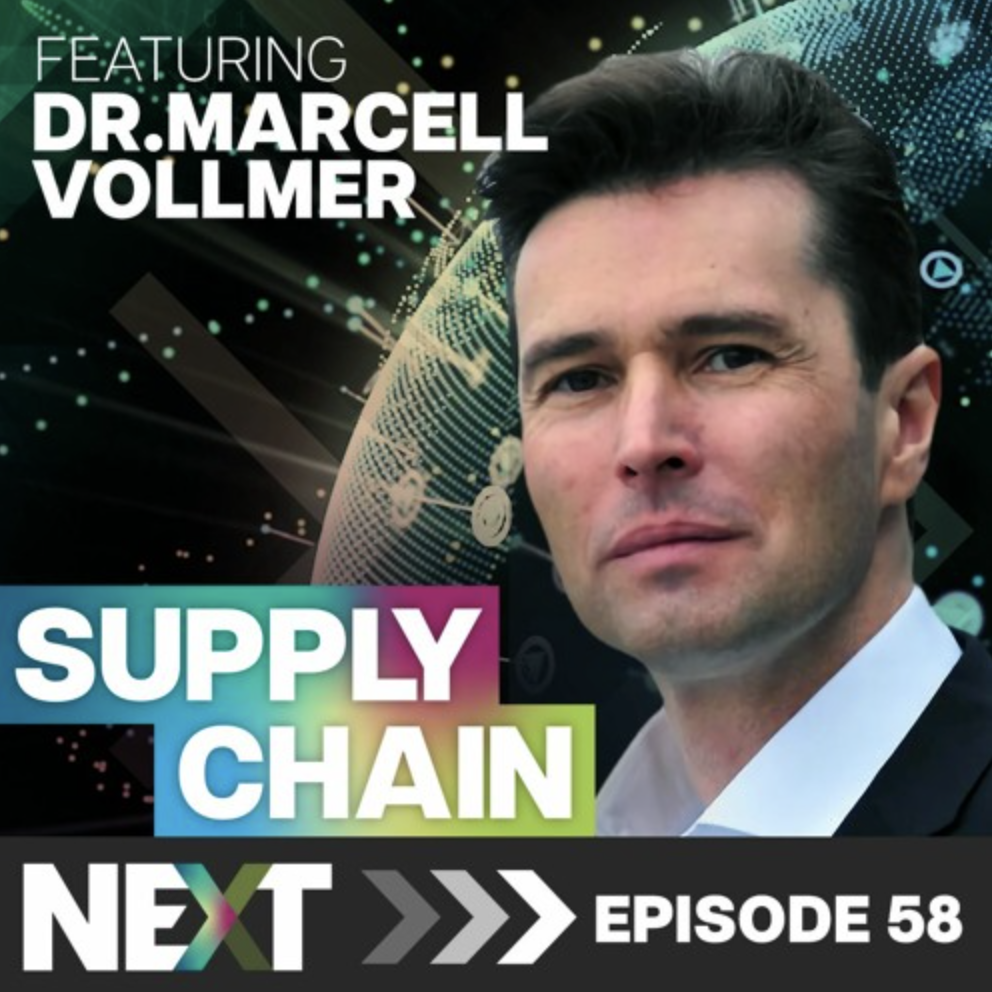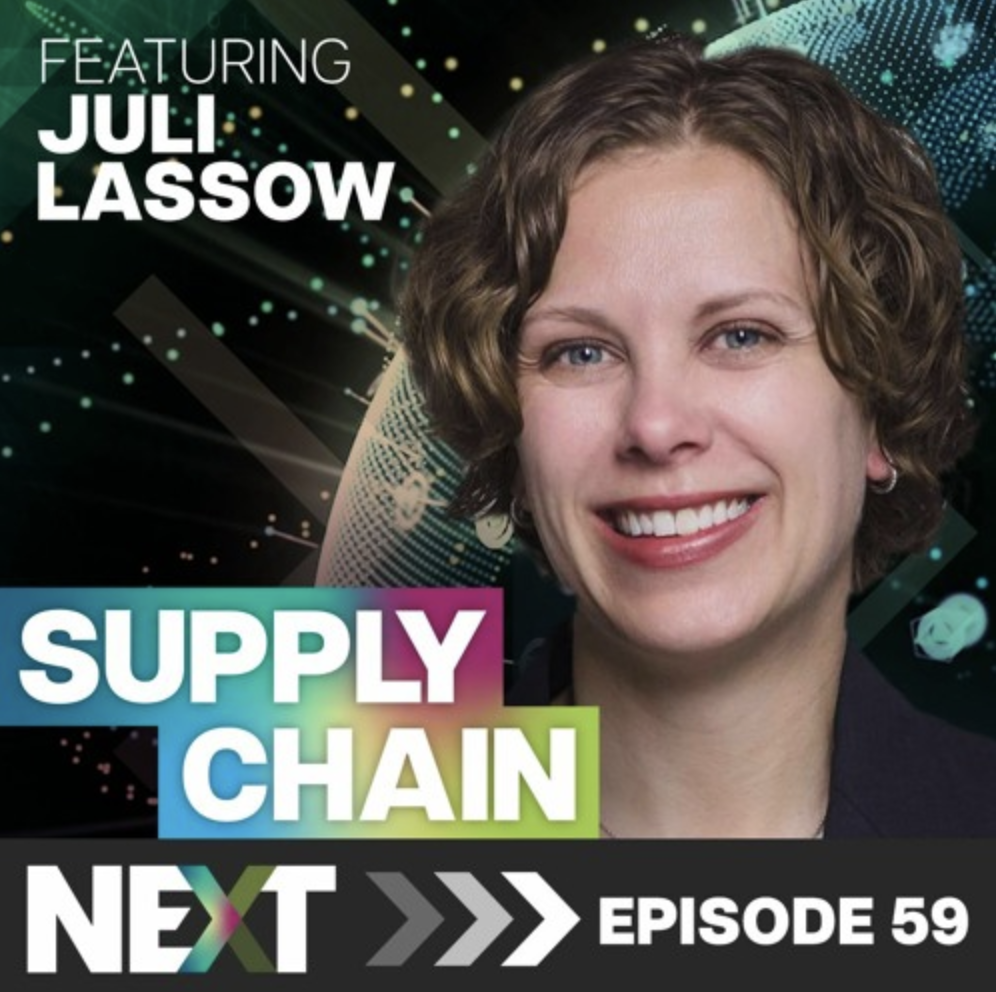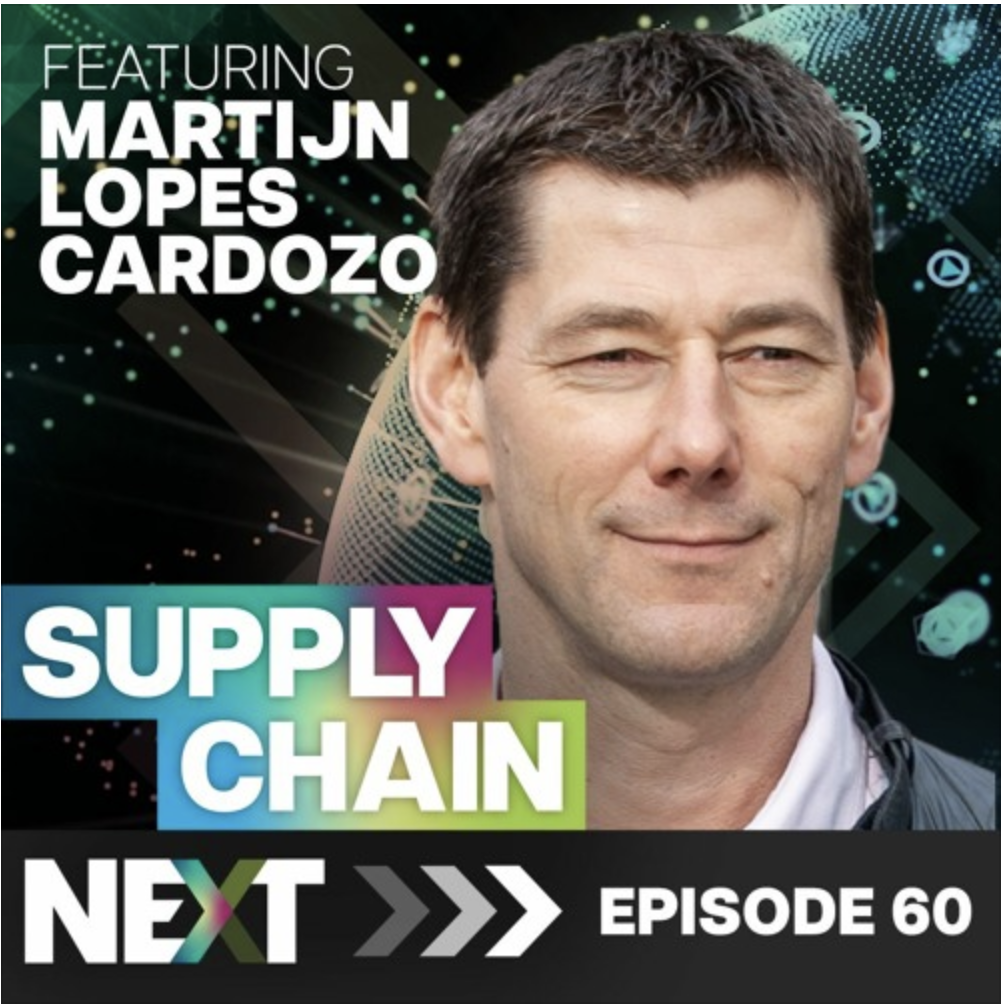Episode 2
Podcast: the Daniel Stanton Interview
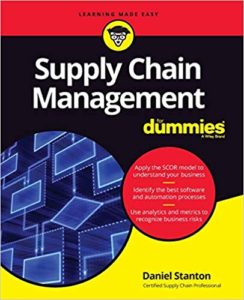 In episode 2 of our new podcast, Supply Chain Next, we were fortunate enough to get an interview with Daniel Stanton.
In episode 2 of our new podcast, Supply Chain Next, we were fortunate enough to get an interview with Daniel Stanton.
Daniel Stanton’s background bridges both practical experience and academia. He is a LinkedIn Learning Instructor and the author of Supply Chain Management For Dummies.
He has worked in supply chain for Caterpillar, the US Navy, APICS (now ASCM), MHI, and other firms, and taught at several universities, and holds the PMP, CSCP, SCPro certifications. He is also a graduate of the Supply Chain Management program at MIT’s Center for Transportation and Logistics. You can learn more about Daniel on his website or follow him on LinkedIn.
Daniel fell in love with logistics and supply chain management while working in a Navy F/A-18 squadron, and it shaped his perspective as his career moved into engineering and IT.
Listen to parts 1 and 2 of the podcast or visit our Soundcloud channel.
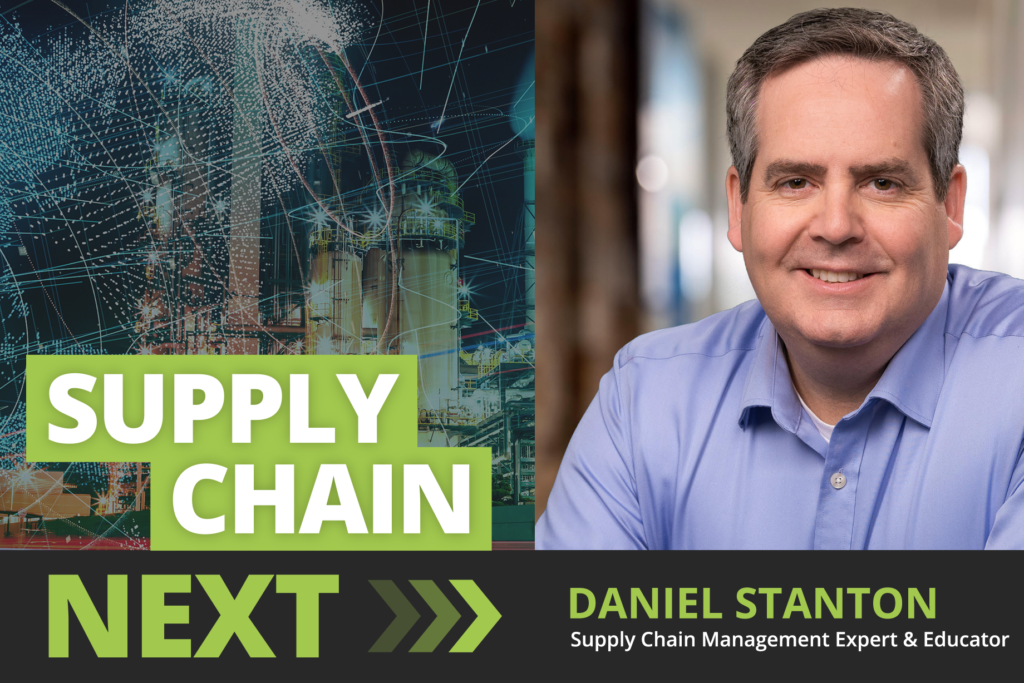
Highlights from the Conversation
Here’s a quick look at the highlights of Daniel’s conversation with host Richard Donaldson.
Supply Chain: the Story So Far
- Supply chain is a relatively new discipline that rose out of the procurement, logistics, and operations disciplines. In fact the term “supply chain” was first used in about 1983 or 1984 in a consultant’s paper.
- In the early 1980s, organizations were taught to silo departments to help practitioners develop deep expertise. Procurement, logistics, and operations were seen as separate – but that perspective isn’t helpful today.
- Supply chain is really the entire system that delivers value to a customer – including sales and marketing. It’s about viewing the entire business as a system.
- Daniel’s illustration of the interdependence of logistics and procurement centers around a cost-saving scenario. There are three fundamental ways you can lower costs: purchase in larger quantities to get a discount, buy from a lower cost provider (often in another country overseas) or lower the quality. All three scenarios involve consequences for logistics, operations, or both. If you buy in larger quantities, you sink more working capital into inventory, and add warehousing costs. If you buy from a lower cost country, again you have more capital tied up in inventory somewhere on the ocean, and increase logistics costs.
Tech and Supply Chain
- It’s good to frame the conversation about supply chain in terms of “what we do” and “how we do it”. The “what” hasn’t changed as much over time, but the “how” has definitely changed.
- Currently tech is playing a role in one of three ways: planning software, execution software, and visibility/reporting software.
- It’s more than a coincidence that supply chain grew up alongside the rise of PCs (personal computers), and for a long time the strongest support came from planning software. Managers started getting more confidence in letting the computer make decisions, and now it has expanded.
- Currently the aspect that’s moving the fastest is visibility software. This has a strong tie-in with automation, AI, IoT, and sensors in general. These tools are helping us answer questions like “what are my inventory levels?” and “is the delivery truck on the correct route?”.
- The challenge with visibility is that people are having trouble figuring out the ROI on visibility, and therefore how much to spend. While there are case studies, it’s still hard. Supply chain managers hold ourselves to a very high standard for financial results, so it’s hard to go into the unknown without predictions we can be sure about.
- We’re in the era of the fast followers – those who are coming right after the early adopters. People are seeing the success of consumer delivery services, and wondering why their logistics team can’t deliver at the same level.
- In the US right now, logistics is moving into ELD – electronic logging devices. These help with things like ensuring that truck drivers aren’t logging more hours than they should.
- Some interesting new tools include FreightWaves, which gives more visibility to market dynamics, not assets. The idea is that if you understand factors like prices, capacity, tender rejection levels – even things like the weather (E.G. hurricanes) you can assess market impact and commodity futures.
- Interoperability between planning, execution, and visibility is the goal.
How Daniel Sees Supply Chain Changing in the Next 5 – 10 Years
- The “how” we do things in supply chain is changing so fast that it’s hard to know where to look: IoT, blockchain, AI – and we haven’t even started on quantum computing.
- Be open to new ideas, but maintain a healthy skepticism because there’s also a lot of hype. But it’s clear that supply chain must move forward: the rewards of seizing the opportunities that tech provides are there, and the consequence of not adapting at all is obsolescence.
- Supply chain managers have to start seeing themselves like MBAs – we have to understand the whole business, even things like finance and marketing, in order to be successful. They’re all a part of the supply chain.
- The challenge lies in finding the fastest, most cost-effective ways to learn these skills. Should companies pay, or provide in-house internships? Many won’t because employment has become so transactional from both sides – employees may leave for other opportunities, or employers may lay them off.
- Two things that will have an impact in the next few years: supply chain platforms and securing the market and proving authenticity.
- Supply chain platforms include things like Requis and Uber Freight – places where you’re replacing the matchmaking services provided by brokers with electronic platforms.
- Authenticity is also a much needed focus: we need to know where things we’re buying and selling come from, who has handled them, and what they’ve been subjected to. The global trade in fake goods is worth more than $1.7 trillion dollars per year. Organized crime is sometimes involved, and it extends from consumer goods to pharmaceuticals, where legitimate drugs are diluted with who knows what.
- We talk about fake news – but fake stuff is a supply chain responsibility that we need to take on.
- Daniel’s company, SecureMarking, provides a high tech solution that creates a nanotech fingerprint that’s easy to use but extremely difficult to counterfeit.
For the Full Details, Listen to Supply Chain Next on Soundcloud >
Learning Resources
- Daniel’s book, Supply Chain Management For Dummies, is available on Amazon
- Daniel teaches seven popular courses on LinkedIn Learning, which are available with a LinkedIn Premium subscription
- MITx Micromasters in Supply Chain Management – it’s free to audit, and the paid version is graded and provides an MITx Micromasters credential
More Episodes
You can listen to our audio tracks and read highlights for each episode below.
We’ve also started publishing video episodes on our YouTube channel.
058 – Dr Marcell Vollmer – Tech in Supply Chain, and the Sustainability Shift
Supply Chain Next · 058 – Dr Marcell Vollmer – Tech in Supply Chain, and the Sustainability Shift Meet Dr. Marcell Vollmer Dr. Marcell Vollmer, a renowned expert in the fields of digitalization, innovation, and sustainability. Marcell is a sought-after speaker and author that has dedicated his career to helping companies and individuals navigate the rapidly…
059 – Juli Lassow – Revolutionizing Retail, Sustainable Strategies, & the Future of Partnerships
Supply Chain Next · 059 – Juli Lassow – Revolutionizing Retail, Sustainable Strategies, & the Future of Partnerships Juli Lassow ,founder of JHL Solutions Meet Juli Lassow Juli Lassow, an accomplished retail professional, speaker, writer, and sustainability advocate, is the founder of JHL Solutions, a consultancy focused on creating outstanding private-label partnerships. With a deep…
060 – Martijn Lopes Cardozo – Circular Supply Chain
Supply Chain Next · 060 – Martijn Lopes Cardozo – Circular Supply Chain Martijn Lopes Cardozo, CEO at Circle Economy Meet Martijn Lopes Cardozo Martijn, a seasoned entrepreneur, has an impressive track record of establishing prosperous ventures within the realms of software, mobile, and digital media in California. Upon returning to the Netherlands, he…

